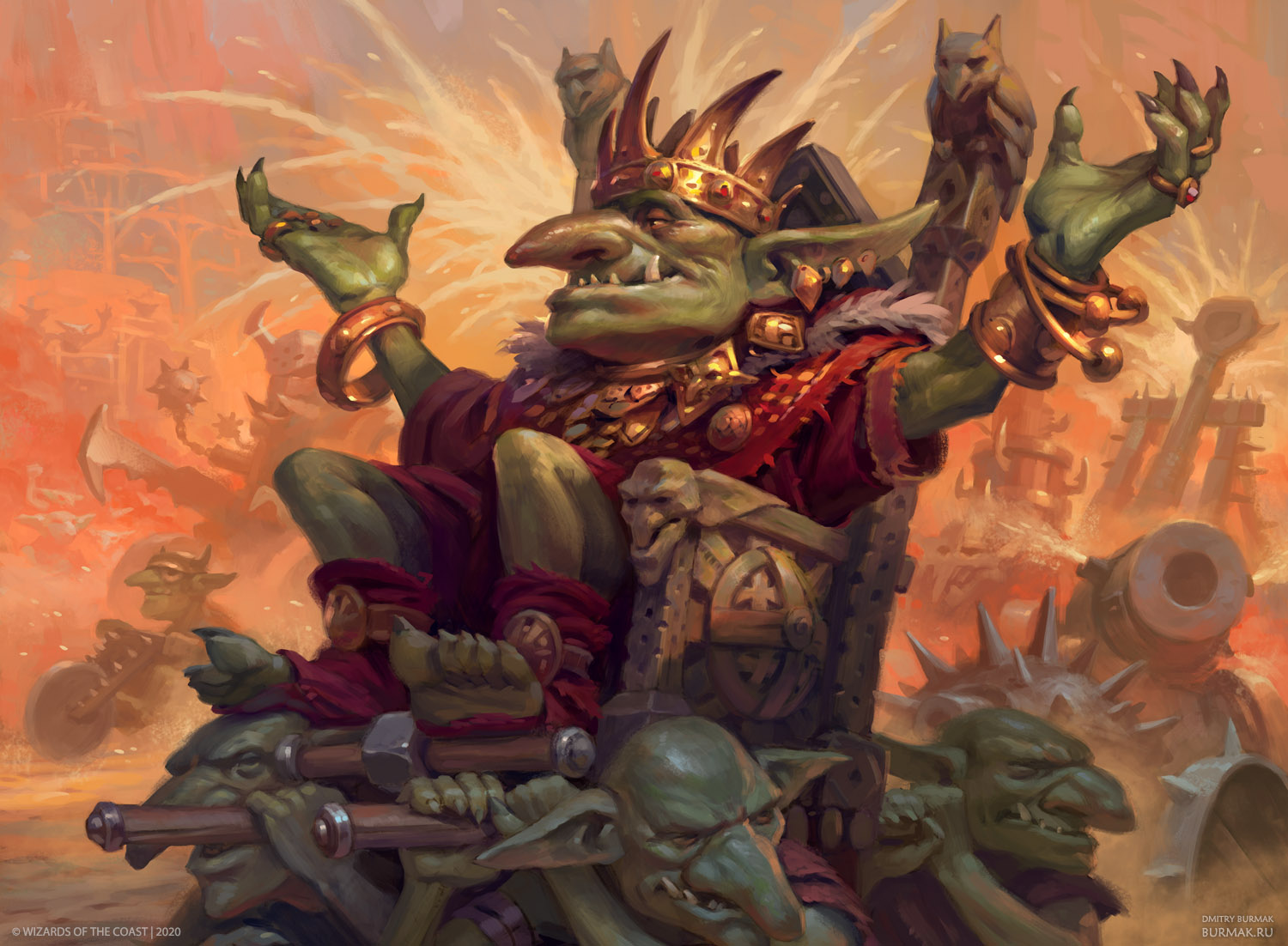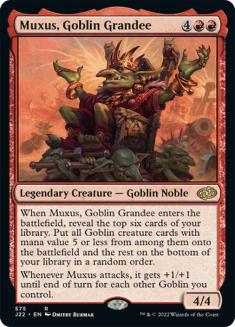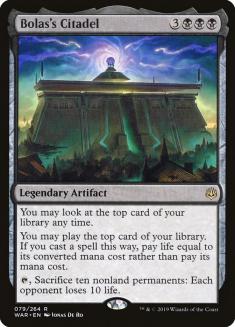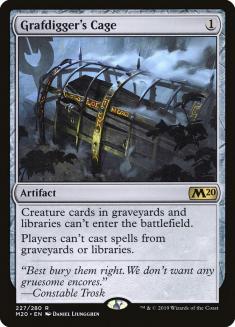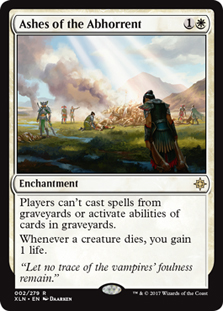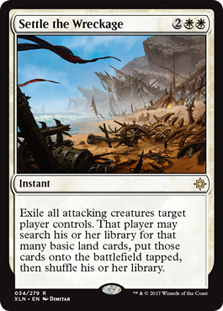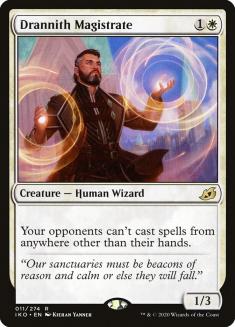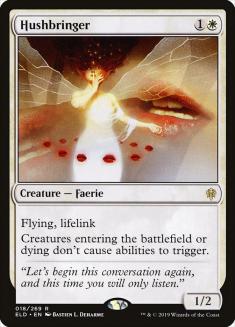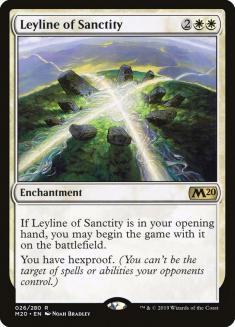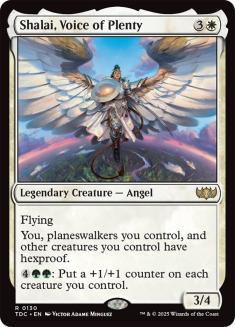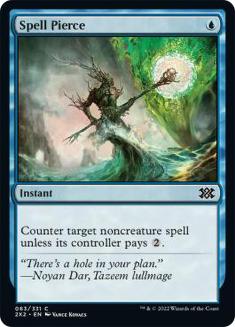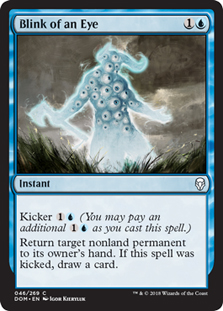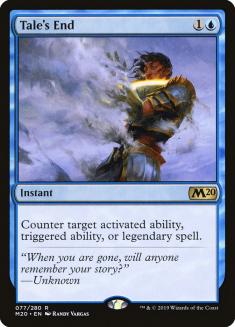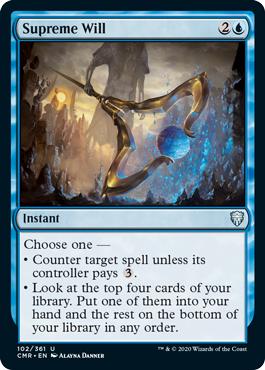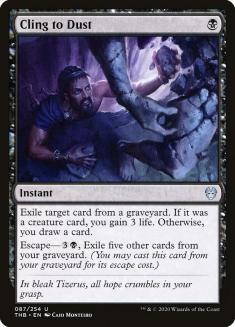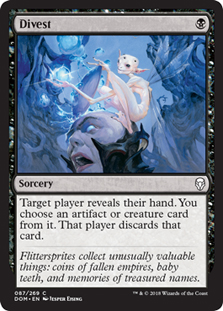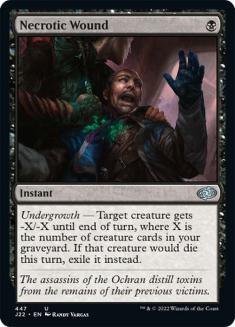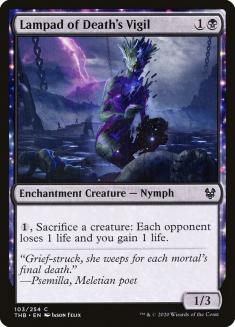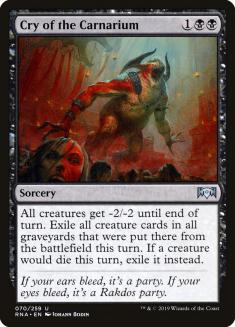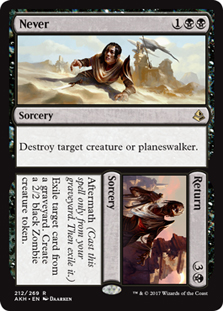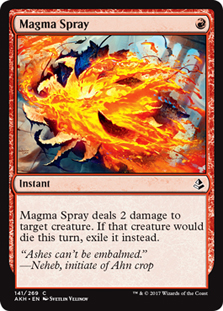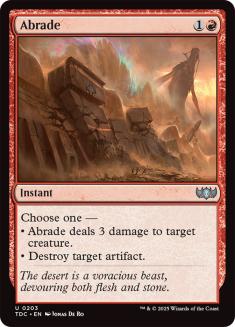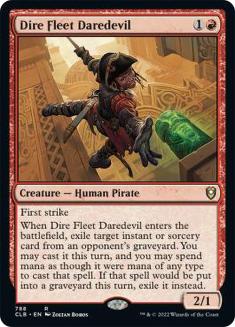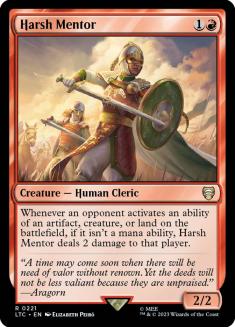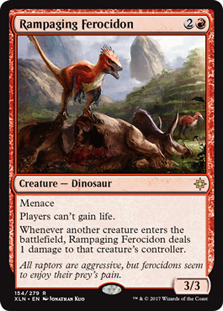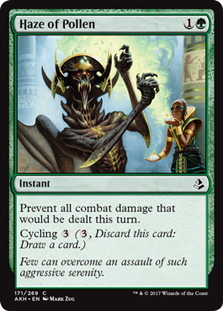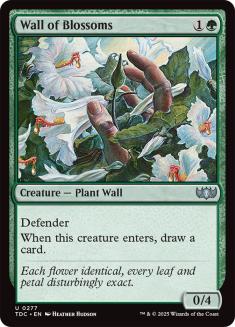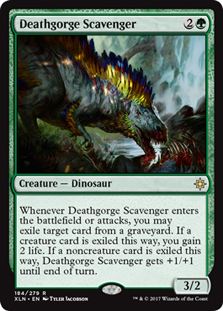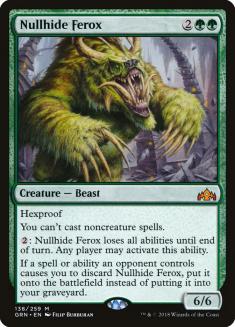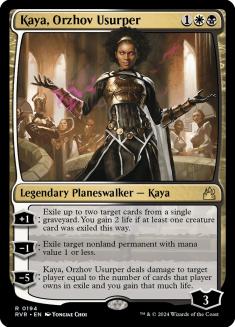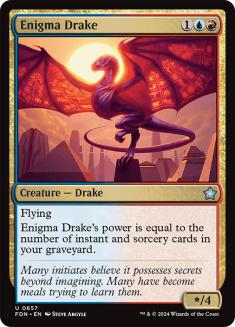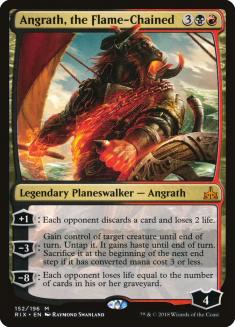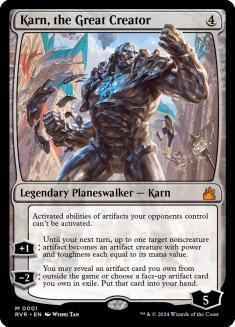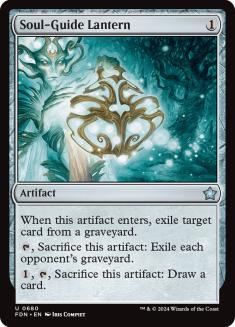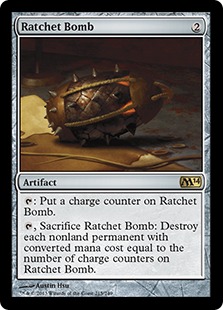Historic has been in a constant state of flux over the past few months between Jumpstart, Amonkhet Remastered, and the bannings of Wilderness Reclamation and Field of the Dead.
It feels as if the dust has finally settled, and now is the time for a no-nonsense discussion of what the pillars of the format are as we are quickly moving towards a series of high profile tournaments between the SCG Tour Online Championship Qualifier #5 on September 7 and the Mythic Invitational the following weekend.
In simplistic terms, the format is defined by the three following cards:
We’ll examine the decks, their strengths and weaknesses, and the types of cards you can look towards to help fight these decks.
Uro Decks
The two strongest Uro decks are Bant and Sultai. I’ll break down both due to their appreciable differences.
Creatures (4)
Planeswalkers (6)
Lands (28)
Spells (22)

What it’s good at:
This is my preferred version among Uro decks. Wrath of God is the largest difference in quality between Bant and Sultai as a whole with the largest trade-off being between the powerful sweeper and Thoughtseize + Zagoth Triome.
In many ways these decks are complete, especially Bant being able to play a great sweeper that helps clean up the other two big strategies in the format, Sacrifice and Goblins, with their traditional “B” strategy of “attack you.”
Uro and Teferi are still incredible and give the deck ample ways to grind an opponent into dust. Acceleration, good interaction, great finishers, and plenty of good sideboard options make this control deck an excellent choice now that Field of the Dead is gone.
How to beat it:
Both Sacrifice and Goblins can cheese any type of control strategy out in a single turn with either Bolas’s Citadel or Muxus. Outside of answering the aforementioned cards on the stack, there isn’t a ton of counterplay for these control strategies. Further, if you can contain Uro and the respective five-mana planeswalker, there aren’t a ton of ways for these control decks to quickly snowball. Decks with strong mid-games like Rakdos Sacrifice (Lurrus) can push the issue when they pair a key removal and disruption spell with some pressure, but again Wrath of God is a big punisher here.
Bant Control is my pick for the best deck in the format.
Creatures (4)
Planeswalkers (5)
Lands (28)
Spells (23)

What it’s good at:
If no one happens to be interested in attacking and instead people stick to midrange decks and/or decks with explosive end-games, then Thoughtseize is appreciably stronger than Wrath of God. Further, Sultai should be favored in these Uro mirrors, but a lot of the details of building these decks still haven’t reached consensus, so these points can be decided in many ways rather than these clean swaps.
This is a good time to note that a big strength of these control decks is their flexibility. You need to play Growth Spiral, Uro, some interaction, and a five-mana planeswalker, but that’s about all that’s set in stone. If you want to start to flip the mirror match, regardless of splash color, then play more Search for Azcanta, Pact of Negation, Narset, Mystical Dispute, etc.
How to beat it:
Attacking and going wide is far more effective against Sultai. Nissa also feels much weaker than Teferi, Hero of Dominaria (how the decks are built now, at least!), and removal spells will line up better against her in contests where Sultai is trying to grind.
Sultai will have a much harder time than Bant if their copies of Uro get disrupted, and in general they are able to handle diverse permanents less effectively without the aid of something like Maelstrom Pulse.
I feel it worthwhile to note the lack of Grafdigger’s Cage in the list’s sideboard. Despite how strong the card is in the format, Sultai really needs Uro.
Goblins
Creatures (36)
- 4 Goblin Matron
- 3 Goblin Warchief
- 1 Goblin Ringleader
- 4 Skirk Prospector
- 4 Goblin Chieftain
- 4 Krenko, Mob Boss
- 4 Wily Goblin
- 3 Goblin Instigator
- 1 Goblin Cratermaker
- 4 Conspicuous Snoop
- 4 Muxus, Goblin Grandee
Lands (24)

What it’s good at:
Muxus is a six-mana “I win the game” button.
Being a combo deck with 36 creatures creates a pretty natural backup plan of “attack with those creatures.”
The deck is consistent for not only being monocolored, but also having extreme densities of “mana,” “lords,” and Goblin Matron to tie it all together with some minimal card advantage elements.
A combo threat alongside attacking creatures makes this deck pretty hard to sideboard against. Grafdigger’s Cage isn’t just lights-out, and I especially love the Hazoret tech I spotted online as not only a dump truck of a threat, but one that is well-suited at lining up against cards that are traditionally strong against the strategy.
How to beat it:
While Goblins is flexible and consistent, if you really want to beat it, you probably can if your deck contains Izzet colors. Sure, Grafdigger’s Cage isn’t lights-out, but it’s very good. Pairing it with sweepers – especially instant-speed ones like Magmaquake, Flame Sweep, and Settle the Wreckage – Aether Gust, and/or just generic countermagic creates several solid recipes for beating Goblins, but the strategy does demand a specific subset of cards to generate a good percentage against it. Sacrifice strategies that play Mayhem Devil get to freeroll some equity in the matchup, as the card is so strong against Skirk Prospector and Goblins’s reliance on using it to “combo off.”
Bolas’s Citadel
I’ll start this section with both a plug for PV’s great article on the subject and my own assertion:
I don’t think it is justifiable to play these decks without Mayhem Devil. Sacrifice decks in general in Historic are both strong and popular, and if you play a mirror match where an opponent has a Mayhem Devil and you don’t, that’s effectively lights-out. While it is true that it can sometimes be a clunker, and many of the Sacrifice decks aren’t built to maximize leveraging the Devil, it is in my eyes just too much of a liability to not play it in anything resembling a mirror match given the texture of the format as it stands now. As I just mentioned in the previous section, it is also an excellent card against Goblins.
As with Uro, I’ll be presenting two decklists:
Creatures (27)
- 4 Llanowar Elves
- 4 Blood Artist
- 1 Midnight Reaper
- 4 Priest of Forgotten Gods
- 2 Paradise Druid
- 4 Mayhem Devil
- 4 Gilded Goose
- 4 Woe Strider
Lands (23)
Spells (10)

What it’s good at:
This is a truly excellent Game 1 deck.
While a little bit less of an instant six-mana “I win” button than Muxus, Bolas’s Citadel isn’t far behind. You basically never miss if you have a Woe Strider on the battlefield, and I wouldn’t give much of a chance to someone surviving an untap step with it on the battlefield.
You can also play well to the battlefield just casting your cards, with Collected Company turbo-charging all of your synergies. If you don’t get run over, you’re extremely well positioned in any creature matchup.
How to beat it:
Grafdigger’s Cage. If it hasn’t sunk in yet, Cage is really strong in this format.
Cage is a massive problem for this deck, shutting off Collected Company, Citadel, and the grinding power of Woe Strider. Nothing about this deck is impressive when Cage is on the battlefield and the gymnastics required to create a configuration of Jund Citadel after sideboard that maintains some of its natural power while hedging about Cage is extremely difficult.
Otherwise, many other cards sit on the range in terms of effectiveness against this deck; there is a wide swath of hedges you can put in your decks that will help here between artifact destruction, graveyard hate, and simple removal spells.
Further, outside of its spells, the deck produces a minimal amount of pressure and doesn’t kill all that quickly, so this is another instance of a few effective counterspells or Thoughtseize breaking up the synergies and leaving some less-than-stellar leftovers.
Creatures (24)
- 4 Blood Artist
- 4 Priest of Forgotten Gods
- 4 Mayhem Devil
- 4 Gilded Goose
- 4 Cauldron Familiar
- 4 Woe Strider
Lands (24)
Spells (12)
Sideboard

I’ll briefly note that I’d personally swap the Claim the Firstborn and Citadel numbers.
What it’s good at:
This version of Jund Sacrifice is less explosive and flashy than versions with Collected Company, more acceleration, and maxed-out Citadel, but it is far better at playing complete matches of Magic.
Trail of Crumbs lets you play deeper and more interactive games, and has the benefit of helping you dig towards interaction to get you out from under Grafdigger’s Cage and other forms of hate in Games 2 and 3.
Mayhem Devil returns to form here. Cat/Oven is still a super-strong engine, and Jund Sacrifice is significantly better at playing “normal” games having more interlocking engines that accrue gradual advantage. Don’t forget that Blood Artist is another big power-up to Cat/Oven!
This is my preferred version of Citadel deck.
How to beat it:
Stealing Game 1 here will be a lot easier for many decks. This version of Jund Citadel is slower and will produce huge cards more slowly and at a lesser clip. While Cage and similar hate are less effective here, that doesn’t mean they’re weak.
This deck needs time to really unlock the potential of its engines, so they’ll be sitting on the battlefield for a while. Cards that can handle a diverse array of permanents will be a lot more effective here for picking off Trails, Ovens, and the like.
Further, other linear decks, including Goblins and Citadel, have a higher chance of being able to just blow past Sacrifice. Unless Jund Sacrifice can quickly find a Mayhem Devil, they’ll have difficulty defending themselves against decks that are just trying to be as linear as possible.
Cards to Look Out For
I won’t be covering these in depth, but I want to put some cards further on folks’ radar when they’re looking to fill in flex slots, build their sideboards, or maybe have a great idea but needs some inspiration for solving a problem. Of course this isn’t comprehensive, but are just some things I’ve been thinking about over the past week.

